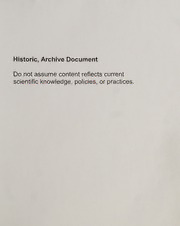
Eastern white pine needle damage PDF
Preview Eastern white pine needle damage
Historic, Archive Document Do not assume content reflects current scientific knowledge, policies, or practices. United States aSB608 P65M85 Department of Agriculture 2011 Forest Service Northeastern Area State and Private Forestry NA-PR-O1-11 April 2011 Eastern White Pine Needle Damage Eastern white pine is widespread and highly valued in New England. During the summer of 2010, white pine needle damage was frequently observed throughout New England. Symptoms consisted of yellow and brown discoloration of 1-year-old needles (figures 1 and 2) on both mature trees and regeneration. Trees most severely affected were growing at the edge of bodies of water; in wet areas; and on dry, steep slopes. This damage has been attributed to two foliar diseases— Canavirgella needle cast caused by the fungus Canavirgella banfieldii and brown spot needle blight caused by the fungus Mycosphaerella dearnessii. Wet spring weather favors spore formation, dispersal, and infection by both fungi. It is likely that wet spring weather during several consecutive years was conducive to an outbreak of one or both of these diseases (figure 3). Late spring frost in 2010 may have also contributed to symptom development, further complicating diagnoses. Needle discoloration appeared suddenly in late May 2010, shortly after several episodes of below-freezing temperatures. Both fungi cause similar symptoms. Lesions in current- year needles begin as spots that develop into brown and yellow bands that continue to expand, causing death to the distal part of the needle (figure 2). The extent of damage for affected needles varies. The bases of needles can remain green, and not all needles in a fascicle may be affected. Dead, brown needle tips can break off, causing tree crowns to look thin a year after initial infection (figure 4). Trees commonly shed needles that are entirely infected, with substantial needle drop occurring in June. The fungi can be told apart by their spore-producing structures, which can be seen with the naked eye or with a hand lens. C. banfieldii produces elongated (15-52 mm), black sexual fruiting structures (figure 5). In contrast, M. dearnessii produces small (< 3 mm), black fruiting structures (figure 6). These fungi can also be differentiated by the shape and color of their spores. The pathogenic fungus C. banfieldii was first described in 1996. Its symptoms had been observed as early as 1908, but had been attributed to other fungi and later, to ozone damage. Needles infected by C. banfieldii are often os oS SS Nh colonized by other secondary fungi, further complicating Figure 2. One-year-old needles with damaged tips on eastern white disease diagnoses. Canavirgella needle cast occurs pine regeneration. throughout the range of eastern white pine, but damage has typically been limited to fewer than 0.1 percent of trees. Damage has been consistently observed in Maine since 2006. Mortality caused by this disease has not been documented, and the effects of repeated defoliation caused by the fungus on white pine are unknown. Control measures have not been investigated. Brown spot needle blight is widely distributed throughout the world and affects many pine species. It damages and can kill nursery trees, regeneration, and young tree plantations. Strategies to control this disease in nursery settings include spraying with protectant fungicides, hes increasing spacing among plants to improve ventilation, Figure 3. Aerial photograph of Vermont forests with damaged and avoiding pruning during wet spring and fall weather eastern white pines. when spores are present. Using fungicides on forest trees is not recommended. Figure cfI nfected pine needle with a spore-producing structure of the pathogen Canavirgella banfieldii. Figure 6. Infected pine needle with a spore-producing structure of the pathogen Mycosphaerella dearnessii. References: Merrill, W.; Wenner, N. G.; Dreisbach, T. A. 1996. Canavirgella banfieldii gen. and sp. nov.: a needlecast fungus on pine. Canadian Journal of Botany. 74(9): 1476-1481. Sinclair, W. A.; Lyon, H. H. 2005. Diseases of trees and shrubs. 2? ed. Ithaca, NY: Cornell University Press. 660 p. Photographs: Figures 1, 2: William D. Ostrofsky, Maine Forest Service Figures 3, 4: Barbara Burns, Vermont Department of Forests, Parks & Recreation Figure 5: Sharon Douglas, The Connecticut Agricultural Experiment Station Figure 6: Edward L. Barnard, Florida Department of Agriculture and Consumer Services, Bugwood.org Contact information for authors: Isabel A. Munck, Plant Pathologist, U.S. Forest William D. Ostrofsky, Forest Pathologist, Barbara Burns, State Forest Health Service, Northeastern Area State and Private Maine Forest Service, Insect and Disease Coordinator, Vermont Department of Forests, Forestry, Forest Health Protection, 271 Mast Laboratory, 168 State House Station, Augusta, Parks & Recreation, 100 Mineral Street, Suite Road, Durham, NH 03824 603-868-7636 ME 04333 207-287-2431 304, Springfield, VT 05156 802-885-8821 The USDA is an equal opportunity provider and employer. Published by: USDA Forest Service Y@a™d PFreidnetreadl oRne cyrcelciyncgl edP rpoagprearm. iii Northeastern Area State and Private Forestry 11 Campus Boulevard Newtown Square, PA 19073 www.na.fs.fed.us
